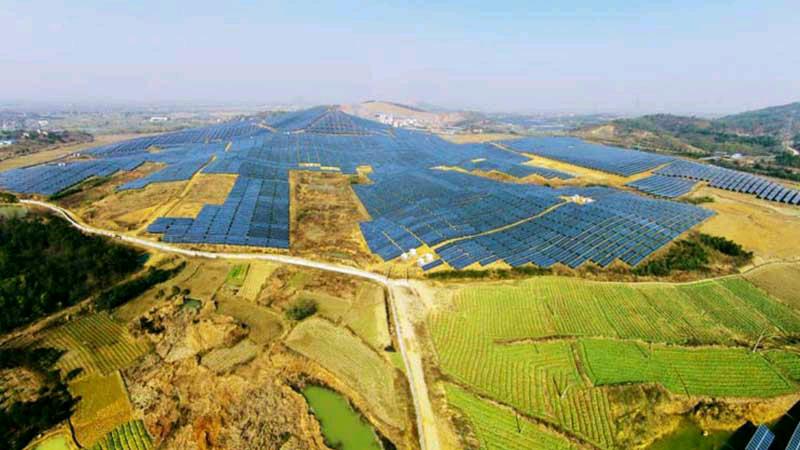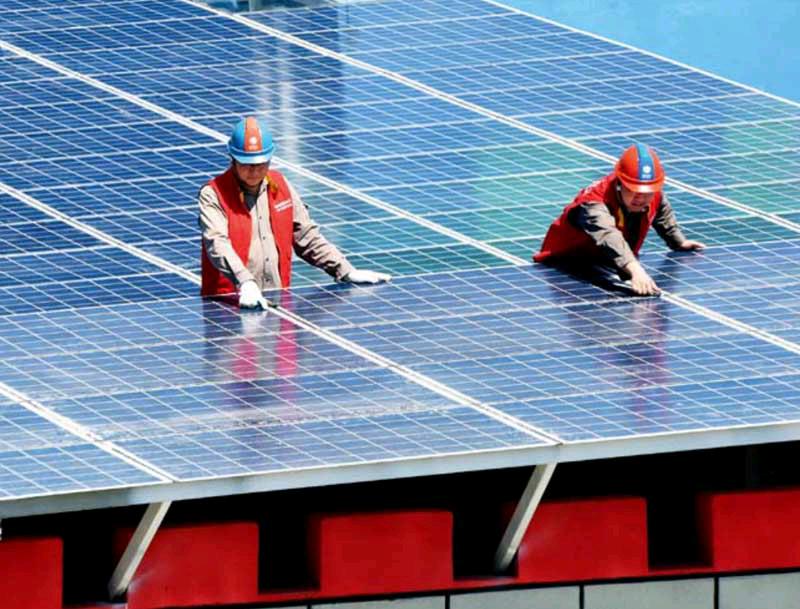Paris Agreement And a Greener World
2016-11-30byZiMei
by+Zi+Mei
On September 3, 2016, Chinese President Xi Jinping, U.S. President Barack Obama and Secretary-General of the United Nations Ban Ki-moon attend the deposit of instruments of joining the Paris Agreement in Hangzhou. Xi pledged that China, a responsible developing country and an active player in global climate governance, will implement development concepts of innovative, coordinated, green, open and shared growth, advance energy conservation, emission reduction and low-carbon development, and embrace the new era of an ecological civilization.
According to the Paris Agreement, China pledged to peak carbon emissions by 2030 and lift the proportion of non-fossil energy in primary energy consumption to 20 percent by the same date.
National Emissions Trading Market
In 2012, an authoritative organization estimated that nine stations managed by Hangzhou Public Bicycle Company reduced carbon emissions by 615.55 tons. The company sold its emissions savings for 21,000 yuan on the Beijing Environmental Exchange. Hangzhou Public Bicycle Company became the first of its kind in China to participate in emissions trading (“cap and trade”). After the deal, the companys trading partner, a company selling healthcare products, could affix on its products a carbon reduction label so they could be sold in overseas markets.
In emissions trading, an entity needing to emit a large amount of carbon can purchase the right to emit more and an entity that does not produce emissions can trade or sell its right to emit carbon to other entities. The trade makes the right to emit carbon a commodity and reduces emissions overall. At present, China has set up seven pilot carbon trading markets in cities including Beijing, Tianjin and Shanghai.
Recently, China announced the establishment of a national carbon trading market in 2017. According to the National Development and Reform Commission of China, the market will cover 2 to 3 billion tons of carbon emissions and surpass the European Union as the biggest greenhouse gas trading market in the world.
Authorities have not yet designated a specific date for the 2017 scheme. “It is really difficult to set up a huge national carbon trading market,” explains Tang Sisi, a carbon market analyst with ICIS China.
According to Tang, the establishment of a national platform requires complicated preparations including extensive data collection, intricate plans, a registration system and a market regulation mechanism.
“It is better to get all your ducks in a row than to rush anything that isnt ready,” Tang adds. “Solid preparation and sound design can guarantee the smooth operation of the market and benefit its development and Chinas environment.”
In recent years, global emissions trading, led by the European Union, has experienced a downturn. Therefore, many are not optimistic about Chinas late entry into the game. But insiders believe that the establishment of a national carbon market evidences Beijings concern and determination to address climate change via market mechanisms.
“A carbon market is a sophisticated system sated with uncertainty from perspectives of legislation and capacity building,”comments Hu Min, director of Low Carbon Program with Energy Foundation China. “Political will from high levels of the government is critical to overcome roadblocks and guarantee market health.”
Energy Restructuring
Twenty-eight-year-old Ehmet Erep was a herder in Halajun County of Artux City of southern Xinjiang Uygur Autonomous Region who now works in a sheep breeding center where solar panels produce 2.23 million kilowatt-hours of energy per year. Rich in sunshine, southern Xinjiang has taken advantage of the resource to develop solar energy that increases local incomes.
Photovoltaic modules transform sunlight into electricity. Since 2013, Chinas photovoltaic installed capacity increased by 10 million kilowatts for three years in row. By the end of 2015, the countrys solar capacity had reached 43 million kilowatts, surpassing Germany to become the largest solar energy producer in the world.
The development of solar power is just one piece of Chinas energy restructuring. According to the Chinese government, the country will continue to use fossil fuel cleanly and develop non-fossil energy including wind power, solar power, geothermal energy and nuclear power. By 2020, new energy will account for 15 percent of total energy consumption, natural gas will take up 10 percent and coal consumption will drop below 62 percent. By 2050, new energy and renewable energy is expected to reach 45 percent of total demand.
“As for energy restructuring, China is greatly developing renewable energy,” remarks Xie Zhenhua, Chinas chief climate negotiator. “In the past decade, non-fossil and renewable energy sources have grown fast: Hydropower has increased 2.57 times, wind power 90 times and photovoltaic power 400 times, with installed capacity that accounts for 24 percent of the world total.”
Because China has abundant coal reserves but comparatively few oil and gas, coal remains the countrys primary fuel. In 2015, coal accounted for 64.4 percent of energy consumed in China, followed by oil at 17.6 percent, hydroelectricity at 8.5 percent, natural gas at 6 percent, wind power at 1.6 percent, nuclear power at 1.4 percent and solar power at 0.5 percent.
Additionally, China is still undergoing urbanization and has extensive infrastructure to build. And if China grows to become a middle- or high-income country, its demand for energy will climb. If clean energy resources fail to grow fast enough, coal will continue to be the pillar fuel for a long time. “For instance, during the 13th Five-Year Plan period, if Chinas GDP maintains a 6.5-percent growth, we will see a two-percent increase in demand for energy and a five-percent bump in electricity demand,” explains Lin Boqiang, director of the Energy and Economy Center of Xiamen University.
Despite the impressive growth in renewable energy, Chinas energy restructuring still has a long way to go.